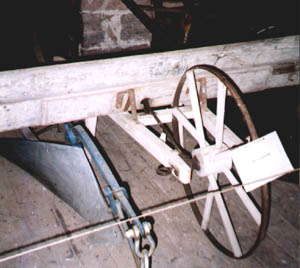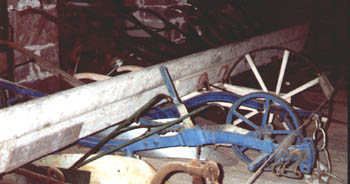Seed drills


Ploughing and harrowing got the ground ready to receive the seed. Sometimes the intended crop was turnips; then the seed was sown into the ridges formed by the turnip stitcher. However, often it was corn - barley or oats - sown over the prepared field.
The Fiddle drill
The fiddle drill or broadcaster made sowing easier and quicker than hand sowing. It was used for grass and clover sowing up to the Second World War and was still made by a Scottish firm up to the 1970s. The fiddle drill uses a disc, spun with the "bow", to fling the seed outward from the feeder bag which hangs from the sower's shoulder. The secret of successful sowing was to synchronise the hand movement with your rhythm of walking. There must be a few fiddle drills still about, forgotten in barn corners.
The Barrow drill

The barrow drill was "a different animal altogether". It too was commonly used to sow clover seed on grassland. Also known as a broadcast barrow, again it gave an even coverage of seed with less wastage than hand sowing.
Seed was rattled out of this by the cogs driven by the front wheel, and the scattered seed was later covered by harrowing. The drill's seedbox is 16 feet wide and must have felt like driving an aeroplane. Normally a drill of this size would have been horsedrawn, but there does not appear to be anywhere to hitch the swingletree on this example.